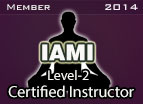The word “meditation” brings different things to mind for different people. For some, it announces a moment of quietude where the inner self has time to refresh. For others, it invokes a state of deeper relaxation that can be experienced in eating, walking, gardening or any other external activity. And for those who meditate daily in one form or another, it is a place of retreat from the outside world, where the body and mind grow relaxed and still— and where deep-lying perception and feeling are awakened.
Today many more of us are learning how to be more attentive or “mindful” in our everyday activities—and some of us engage in inner energy practices like yoga or Qigong to maintain balance in our busy lives. But sitting in meditation not only calms our senses but also anchors us amid the flux and turbulence of everyday life. Things which used to worry or agitate us start to fade and, one day, we discover they’ve fallen by the wayside.
Meditation is a journey of self-discovery and self-transformation. As we come to know our inner self, we begin to let go of undesirable tendencies and habits and instead steer with the brilliance of our more authentic nature. We do this by staying alert and learning to observe ourselves in a new way. As a result, we grow more open and joyful, more resourceful and creative.
By paying attention to our breath and “sensing our presence” in the moment, we are bringing about a state of deeper awareness, a state that is akin to the first stage of mediation. Any one of us who can do this is already meditating!
As meditators, we learn to advance our skills through our own experience on the cushion, and this will become the very foundation of our unfolding practice. We can then bring together other techniques to help us grow clear in our minds and resolute in our endeavor— to come to know ourselves afresh.
There are unique tenets and principles to building and maintaining a meditation practice that is deeply fulfilling and to which we can return eagerly day after day. Three of the key principles are:
- sit in a correct and comfortable posture
- focus on your breath
- let go of distractions that arise
These comprise the basic components of sitting meditation, and both the beginner and veteran meditator return to them in every session. Sometimes slow, sometimes quickly, we open up to our deep intuitive self and find our best ally to help us navigate the course of our own unique journey.
There are also other keys that are instrumental to meditation. Some of these—like patience and resilience—are qualities which we need and use in our everyday lives. With the guidance and support of a qualified meditation teacher, these and others can be seamlessly integrated into our practice as it evolves.
For more information on how I can serve as your meditation teacher, please click here to email me.
